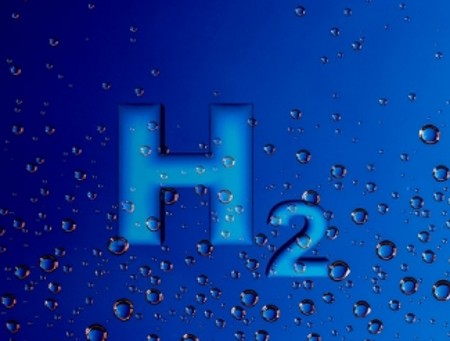June 3, 2020 – In the transition away from fossil fuels to mitigate climate change, we are seeing the rise of zero-emission electric-powered transportation, solar, wind, and geothermal power production, and a growing interest in powering the planet with hydrogen. Since the last posting to this blog site about hydrogen written in March of this year, some interesting developments have occurred to more than kickstart the year of hydrogen.
Much of the action is coming from the European Union (EU) and a handful of other countries that see scaling up hydrogen production as a necessary strategy to get to net-zero emissions by 2050.
Bloomberg Green reports that the EU this year has drafted policies and plans that include:
- growing hydrogen production to 1 million tons per year by 2025
- encouraging investment in hydrogen through the existing carbon cap and trade exchange
- doubling funding for hydrogen research to 1.3 billion Euros beginning now
- providing 10 billion Euros per year backed by the European Investment Bank for hydrogen infrastructure projects
Currently, 19 companies within the EU have formed a coalition to produce millions of tons of hydrogen annually but mostly through coal and natural gas conversion. They are calling this the low-carbon hydrogen option. In the case of coal conversion, they are including sequestration and carbon capture in the mix. In the case of using natural gas, they are describing the technology and fuel as a low-carbon option and natural transition to a carbon-free energy future.
The group includes noteworthy fossil fuel companies like Chevron and Royal Dutch Shell. The bulk of the remainder is from the automobile industry who see advantages in burning hydrogen rather than gasoline or diesel or putting hydrogen-fuel-cells into cars where traditional internal combustion engines or even batteries would go.
There are countries that have also jumped on the bandwagon including the 27 in the European Union, Canada, the United Kingdom, Norway, China, Australia, Japan, South Korea, and Singapore.
What kinds of projects are being contemplated in this green hydrogen future?
- coal to hydrogen conversion attached to existing thermal powerplants
- natural gas to hydrogen conversion at existing thermal plants
- using wind, solar, geothermal, and hydroelectric power to harvest hydrogen through electrolysis
The fossil fuel companies are pushing natural gas reforming processes, and coal and natural gas gasification because that’s the raw material of their industry. Electrolysis is seen as the cleanest way to proceed but requires fresh water, an increasingly scarce resource. Ocean water would need to undergo desalination before hydrogen can be harvested which would make the production process prohibitively expensive.
Other hydrogen production processes under consideration include:
- extracting it from ammonia
- using catalysis to harvest it from methylcyclohexane
- as a byproduct of fermentation
- as a byproduct of green algae
- using solar concentrators or nuclear reactors to split water
If we are interested in mitigating climate change and making the transition to a carbon-free energy future, should we be concerned about some of these production processes? The answer is yes. Hydrogen produced as a byproduct of burning fossil fuels creates greenhouse gas emissions. Some of the earliest hydrogen enthusiasts, particularly the fossil fuel companies, aren’t making hydrogen the way we need it to be produced. To give you an idea of just how little is being made through low-carbon processes, in 2018, only 4% of hydrogen produced came from electrolysis. But this is changing as electrolysis moves to the forefront to help develop a future hydrogen infrastructure.
Here are just some of the countries and projects currently in planning or underway.
In the EU, The Netherlands plans to produce 500 Megawatts of hydrogen electrolysis by 2025 and grow it to 4,000 Megawatts by 2030. The industrial gas maker Air Liquide SA in France, and the steel company, ThyssenKrupp, in Germany are also in the process of building electrolysis capacity.
Japan, through the efforts of companies like Toyota and Honda, has implemented an action plan for 10,000 hydrogen fueling stations across the country to be completed in this decade.
In Australia, Siemens is developing a 5 Gigawatt solar and wind project for hydrogen electrolysis.
The United Kingdom has unveiled a 4 Gigawatt offshore wind project for hydrogen electrolysis.
In Canada, Ballard Power Systems, one of the original developers of hydrogen fuel cells, after years of being little noticed, has attracted significant new investment to scale production for a future of hydrogen-fuel-cell cars and trucks.
And in the United States, a group of companies have produced a hydrogen roadmap with a plan to power transportation and produce up to 14% of the country’s low-emission energy through hydrogen electrolysis by 2050. The report states that electrolytic hydrogen can be manufactured through an abundant supply of renewable resources including wind, solar, and hydroelectric power. It also advocates for a next-generation of modular nuclear reactors to replace the current conventional reactors and have them in place by the 2030s to be primary producers of both hydrogen and electricity for the country. The hydrogen would be used largely to replace gasoline and diesel for transportation, power generation, as fuel for residential and commercial buildings, and as an industrial feedstock.
If not in 2020, then hydrogen in 2021 or 2022 barring no new pandemics to crash the global economy.









